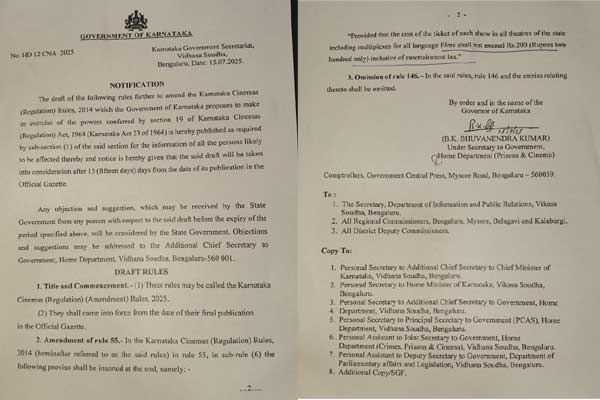The Karnataka government has proposed a Rs. 200 cap on movie ticket prices across all theatres and multiplexes, regardless of language or screen format. Still in the draft stage, the rule is open to public feedback and aims to make cinema more affordable for all sections of the audience.
If implemented, this move would most benefit the average moviegoer. With multiplex prices often exceeding Rs. 300 in cities like Bengaluru, a uniform cap could make regular theatre visits more feasible, especially in smaller towns. It may also boost footfall for Kannada films and help revive struggling single-screen theatres.
For the Kannada film industry, particularly small and mid-budget filmmakers, this could mean wider reach and better box office traction. However, it poses a challenge for big-budget films that rely on high opening-day collections and premium pricing, especially pan-India projects like Kantara: Chapter 1 or Toxic. These films will now need larger audience turnout to maintain profitability.
The cap also impacts dubbed films from other languages. Telugu, Tamil, and Hindi releases, which usually enjoy higher ticket rates in Karnataka, will now be priced the same as local content. This levels the field for Kannada films but may reduce the incentive for outside industries to aggressively push dubbed versions here.
Other film industries should view Karnataka’s model with caution. Andhra Pradesh’s aggressive pricing cap led to friction with theatre owners and producers, while states like Telangana follow a more balanced, tiered approach. A flat rate may not suit all markets — flexibility will be key.
Karnataka’s move signals a shift toward audience-friendly cinema policy, aiming to make theatrical viewing more inclusive. However, its long-term success will depend on how well it balances affordability with the practical needs of exhibitors, producers, and distributors. As the proposal moves forward, open dialogue and adaptive implementation will be essential to ensure that both viewers and the industry benefit without compromise.


